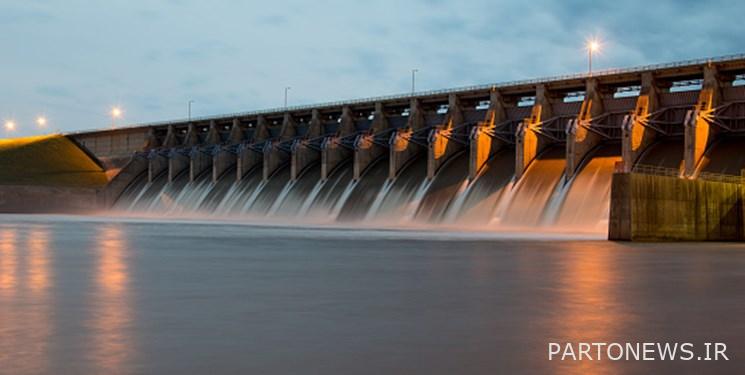“Stubborn management” is essential to solving the water problem

According to the economic correspondent of Fars News Agency, the issue of water resources management in Iran in recent decades has provided the ground for widespread problems and this issue has caused us to see widespread problems in this area.
In this regard, changing the way we look at the issue of water resources management, more than anything else, requires studying the experiences of successful countries in this field, and after the formation of such a procedure, we must try to make the right decision in accordance with the country.
At present, with the formation of a new structure and personnel in the country’s water resources management, whispers of moving towards improving water conditions and establishing a water resources governance structure can be heard, and the words of those in charge of this field announce the creation of favorable conditions.
In this regard, in order to investigate the issue of water resources management Pejman Teymouri, expert in the field of water governance We went to talk to him about this. In this regard, this conversation will be organized in 3 parts and will be available to the audience.
The details of the second part are as follows:
* Stubborn management of water resources is a requirement of the country
Fars: We have widespread problems in water resources management, in your opinion, what is the main root of these problems?
Timurid: Groundwater-related crises, including rising sea levels, severe drought or floods, landslides and outbreaks فرچاله ها است. We currently have a collection of these problems in our country, but some countries have problems such as landslides and creating فرچاله They are not involved. This difference in level of problems is precisely the difference between having and not having a stubborn management of water resources.
In fact, countries like Japan have long been planning for tough managementCatching Water resources are at the forefront of their work, as soon as the first signs of aquifer instability appear and their reserves decrease, and before work reaches narrow places such as landslides, which is the last stage of intuition and signs of decline, difficult solutions Catching Implement the management of water resources, but in our country, despite the latest warning of the preparation of aquifers, ie land subsidence, still difficult measures.Catching And more importantly, it has not been consistently adopted in the discussion of water resources management.
Fars: Basically, what is the importance and position of this work that we refer to as water resources management?
Timurid: Water resources management is important and valuable in several aspects, firstly, it is considered the issue of maintaining the health of the community, on the other hand, overcoming water crises and returning to pre-crisis conditions, so-called resilience, along with consensus or consensus between Stakeholders such as people and environmental activists to participate in the management of water resources and create justice and fairness in the allocation of water resources while realizing and maintaining the beauty of the environment (preventing desertification, preserving tourism, etc.) are among the things that manage water resources. It becomes vital. Also the preservation of relative values (cultural values, antiquities), the preservation of intrinsic values such as ecosystems that are independent of human societiesSelf They are valuable and instrumental values, ie economic values such as water supply for agriculture, irrigation, urban and industrial uses, etc. are other issues of importance of water resources management.
* Precise definition of water resources governance
Fars: In your speeches, you mentioned the issue of overcoming crises, the title of the issue of elasticity, can you open this issue?
Timurid: Among the valuable aspects in water resources management is the issue of elasticity in terms of the very nature of the programMore central It is from the rest, because it is consistent with scientific studies on the sustainability of water resources. The realization of elasticity is in conflict with the preservation of instrumental values.
Groundwater sustainability, which is based on hydrological studies, is a function of aquifer performance and governance factors, and achieving groundwater sustainability certainly requires a common ground between knowledge and water policy. This necessity stems from the fact that the sustainability of aquifers is not merely a scientific-technical issue, but the result of social decisions and priorities. Unfortunately, we in our country have not yet been able to establish a good common ground between knowledge and water policies.
Fars: In the expert literature on this issue, when we talk about water governance, it is precisely the discussion about creating this common chapter in the initial step and its proper functioning, what is your definition of water resources governance?
Timurid: Water governance is the process of making decisions about resource goals (regulation) and, consequently, the defined rules and practical measures to achieve those resource goals. Groundwater stability has eight main factors, five of which are related to aquifer performance and three of which are related to aquifer governance. The five factors of aquifer performance include: aquifer recharging rate and aquifer storage conditions, water quality, aquifer discharge rates and environmental flows, natural hazards and threats, pumping, injection, monitoring, storage, treatment, facilities and water treatment technologies.
The first four factors among the five factors of aquifer performance are part of the natural groundwater system and the fifth factor is part of the infrastructure systems.
Three governance factors will include legal, regulatory and regulatory constraints, social values and priorities, and economic feasibility.
The first factor among the three factors of water governance is part of regulatory systems or so-called regulation and the other two factors are part of socio-economic systems.
Among the aquifer performance factors, importantMost The factor in natural groundwater systems is the same as aquifer recharging rate and aquifer storage conditions. This factor includes climatic conditions, the effects of land use change, declining levels, and groundwater storage. In addition, this factor includes increasing the rate of re-feeding of the aquifer by changing agricultural technologies and measures and methods of agriculture and land use.

* How aquifer governance factors can affect groundwater stability
Fars: In your definition of water resource governance, does the issue of physical water sustainability depend solely on aquifer performance?
TimuridsPhysical stability of water depends only on aquifer performance factors, while groundwater stability is not only a function of aquifer performance, but also a function of adaptive governance factors in the partnership. It will be obvious that partnership builds consensus and consensus among environmental activists and stakeholders to play a role in improving groundwater resources and water management programs.
Given the importance of water resources management values as well as the importance of groundwater sustainability, we now well understand how aquifer performance factors and governance can influence groundwater sustainability studies. Integrating adaptive water resources management programs means how complex hydrological modeling, uncertainty, and non-participation can contribute to the success of water resources management programs.
Fars: In this system of water governance, what is the role of modeling and relying on scientific potential and capacity to pay attention to the issue?
TimuridsModeling is the process by which we pass on our knowledge of the system, that is, water, to others, while uncertainty is the process by which we pass on our insufficient knowledge of the water system to others.
Uncertainties are generally related to geological structures, aquifer re-feeding rates, and climate change, which are even more influential than the boundary conditions defined in hydrological models.
I have a good example for you about geological structures. About 16% of the world’s population is on formations Karst They live and in addition 15-16% of the world’s freshwater reservoirs are located in karsts. Hydrological modeling of karsts is very difficult, which is why most studies of artificial recharge of aquifers generally focus on porous aquifers or alluvial aquifers.
The amount of artificial feeding of aquifers depends a lot on land use and land use change. Land use change has plagued urban environments. On the one hand, many agricultural lands on the outskirts of cities are left without cultivation for years for pre-determined purposes, until not only does their soil lose its fertility for agriculture, but also the growth of urban populations and increasing urbanization. There is no choice but to change the use of these lands from agriculture to housing. On the other hand, and in the opposite point, due to non-observance of cultivation sequence in rural and non-urban environments, which causes Import The pressure on groundwater resources will be reduced and the soil will be reduced in strength and fertility. As a result, the area under cultivation of agricultural lands will decrease due to climate change and water shortage, which ultimately leads to desertification and reduced arable land and threat to food security. It becomes. In either case, the land use change is such that no action can be taken to artificially charge the aquifers.
* 75 cm increase in sea water for the next 80 years
Fars: What is the operation of this artificial aquifer feeding, to which you pay special attention, and how is it possible?
Timurids: Artificial feeding of aquifers depends a lot on land use change. The importance of artificial nutrition is very high. Sea levels are projected to rise by at least 75 centimeters by 2100, posing a threat to coastal aquifers that could lead to salinization.
Recent studies to workThe above proves that if artificially charged aquifers are acted upon in the face of this potential and gradual actual damage, it will have a far greater effect on the infiltration of seawater into coastal aquifers. They prevented seawater from seeping into the aquifers.
Therefore, preventing land use change is very sensitive. For example, in many provinces, such as Hamedan, due to water shortages in recent years, a large part of agricultural land has been excluded from the cultivation cycle. For example, a farmer who owns ten hectares of land, due to lack of water and drying of water wells, removes five hectares from the cultivation cycle, which is prone to desertification, and cultivates only 5 hectares continuously and sometimes twice a year. The farmer can cultivate the same ten hectares for one year and fall for one year so that this rotation, in addition to preserving the strength of the soil, also prevents the gradual desertification of five hectares of arable land. to work Brought. In previous years, the phenomenon of dust often occurred in dry seasons and summer in a few provinces such as Sistan and Baluchestan, Khuzestan, Ilam, Kermanshah and some Kurdistan, but in 1400, in addition to the dry season, in March, the phenomenon of dust in March. Dust occurred intermittently with rain in the mentioned provinces and other provinces, which raises the concern of increasing the phenomenon of desertification in our country and neighboring countries.
Fars: I asked you a question about modeling, if I understand correctly, modeling is actually a specific layer of ComplexityWhat are the sustainability of water resources and how does it help us?
Timurid: As mentioned, the complexity of hydrological models is also one of the problems of groundwater stability studies. In fact, hydrological modeling is the first layer of complexity in the study of water resources sustainability due to the ambiguity about the properties of aquifers and their geometric characteristics. Given the extinction of numerous ecosystems such as springs, lagoons, reservoirs, lagoons, estuaries and other natural resources in recent years, the ecological water needs of these ecosystems should undoubtedly be considered in hydrological studies.
The addition of these water-dependent ecosystems to groundwater hydrological modeling, in turn, adds another layer to the inherent complexity of groundwater stability studies. Obviously, ecological water needs should be quantified in hydrological studies, but the knowledge of quantifying these needs is still in its infancy and has not reached advanced levels of forecasting.

Why it is difficult to predict ecological needs
Fars: What exactly is the reason for the difficulty in predicting the ecological needs of ecosystems?
Timurid: It is difficult to determine the dependence of ecosystems on hydrological stimuli, and the extent to which ecosystems respond to hydrological changes in specific time and place conditions is unclear. This is due to the knowledge gap in the field Echo Hydrology On the other hand, ecosystem monitoring data, including ecological, hydrological, and geomorphological data, are temporarily and spatially dispersed, and groundwater-dependent ecosystems are highly diverse, making management ecosystems difficult.
In practice, there are two major challenges to meeting the water needs of ecosystems in groundwater sustainability assessment studies. First, it is unclear exactly how much ecological water will be available to ecosystems with a specific groundwater pumping scheme. Secondly because it decreases head Hydraulics significantly reduce or stop the recharging of springs and increase the infiltration of saline water into groundwater, it is difficult to determine the amount of water required by ecosystems or so-called ecological water. This challenge is much more difficult and complex than the first one.
Given the complexity of modeling ecosystem water needs in hydrological studies and groundwater sustainability, it is best to consider more practical methods for conserving ecosystems, such as using adaptive management programs, risk assessment of ecosystem destruction, sensitization, and stakeholder participation.
end of Message/

